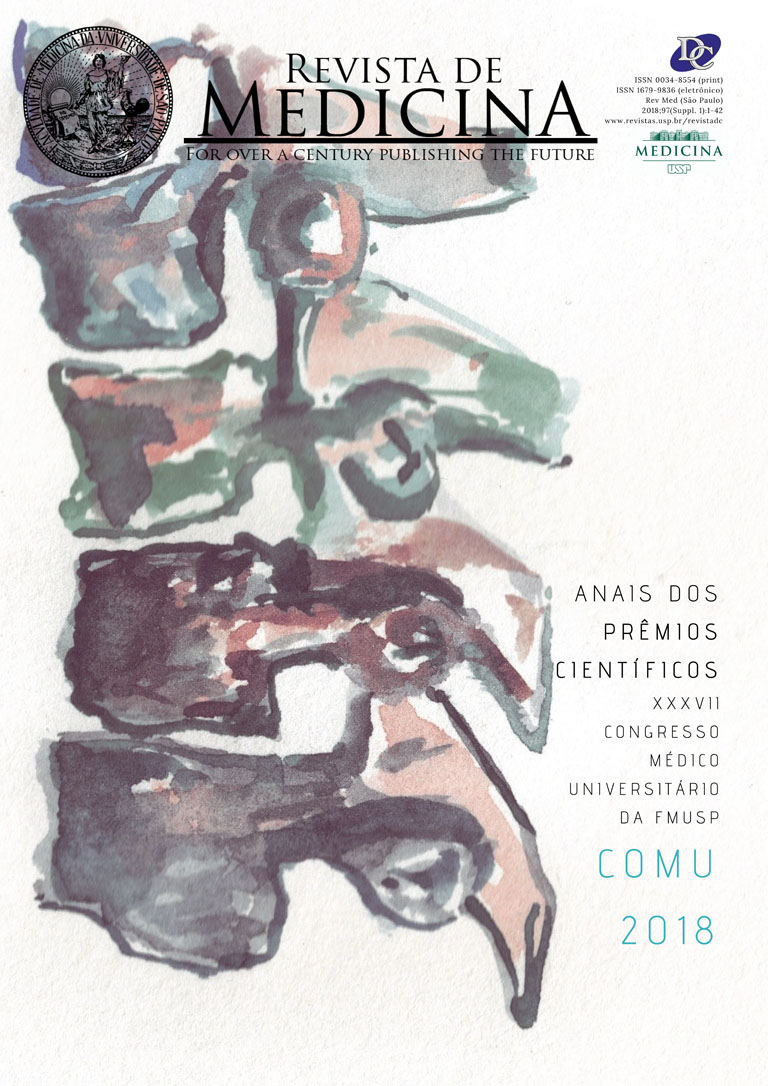Atypical manifestation of Ichthyosis vulgaris in children: case report
DOI:
https://doi.org/10.11606/issn.1679-9836.v97iSuppl.1p38-39Palavras-chave:
Ictiose Vulgar, Pele, CriançaResumo
Introduction: Ichthyosis vulgaris is a common disorder characterized clinically by xerosis, excessive scaling, hyperkeratosis, keratosis pilaris, palmar and plantar hyperlinearity. It is an autosomal dominant genetic disorder with a strong association to atopic disorders. Clinical manifestations typically begin in the first year of life, with a slight thickening of the skins surface and fine scaling, mainly on extensor areas of the extremities, scalp, central part of the face and buttocks. Flexion surfaces are not compromised, and the abdomen, neck, and face are rarely affected. Most cases are not severe, and their clinical manifestations may improve or even disappear with age. Objective: This study aims to discuss the abnormal clinical manifestations of the patient in relation to the characteristics of the disease. Case Report: Male patient, two years old, from São João da Boa Vista - SP, is the first gestation of a non-consanguineous couple without intercurrences in relation to the gestational antecedents; has no siblings. He had prenatal care, born cesarean delivery, at term, newborn suitable for gestational age weighed 3,140kg, 50th percentile, measured 49cm, cephalic perimeter 35cm, thoracic perimeter 33cm, Apgar 9/10. At birth, extremely dry skin was seen with fine, diffuse scaling. At fifteen days of life there was worsening of skin dryness along with widespread erythema of diffuse on his body, including the scalp, face and folds, uncommon manifestations in this pathology. With dermatological guidance, he started treatment with a 10% urea-based moisturizer with partial improvement of the cutaneous condition. At 6 months of age, when breastfeeding stopped, and milk formula was introduced, there was a significant worsening of the skin peeling, being laminar in the upper extremities, lower extremities, scalp, buttocks, abdomen and face. Along with this, he presented pruritus and severe cutaneous hyperemia. This initiated the use of highly hydrolyzed dairy formula, second generation antihistamine and maintenance of cutaneous hydration. Research was conducted for food allergies using RAST to test for major food antigens, the results were negative. Biopsy results were compatible with ichthyosis vulgar. The oral challenge test results were positive for proteins in cows milk. In a follow-up with allergist and dermatologist, the child began to maintain a diet that excludes cow’s milk and derivatives, along with industrialized products with dyes and preservatives that also worsen the cutaneous condition. At two years of age, he reports improvement in the appearance of the skin with less flaking and less pruritus present in exposed areas such as face, scalp and limbs. Also, he shows ephemeral episodes of skin whitening. Mother relates clinical cutaneous improvement with less sun exposure. His neuropsychomotor development is normal. He is currently using an antihistamine, 10% urea-based moisturizing liquid petroleum jelly and sunscreen. At his physical examination: weight and height z score 0. Fine scaling was seen in the abdomen and in plaques in the upper limbs and scalp. This is causing large, square, brown, adherent scales in the center, with loose edges and areas of scaling with erythematous fundus. There is slight alopecia in areas on the scalp.
Downloads
Downloads
Publicado
Edição
Seção
Licença
Copyright (c) 2018 Revista de Medicina (São Paulo)

Este trabalho está licenciado sob uma licença Creative Commons Attribution-ShareAlike 4.0 International License.




